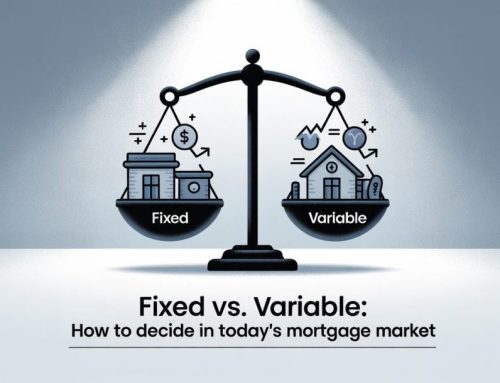Happy New Year, and welcome to 2024!
Mortgage rates in the last few years have been a roller coaster of unpredictability, full of twists and turns. Predicting mortgage rates has become analogous to a strategic game, challenging even the most seasoned of economists. But if things progress as expected, then we can expect 2024 to be a year filled with declining mortgage rates… and that will truly be something worth celebrating!
However, the track record of economists’ predictions over the past couple of years has been less than stellar. Let’s explore what we might expect in the year ahead.
2024 Rate Forecasts from the Big Six Banks
It’s widely expected that the Bank of Canada will start cutting their rate starting in the second quarter this year. Here’s the breakdown of the latest forecasts from the six banks:
| BANK | Q1 | Q2 | Q3 | Q4 | TOTAL |
| BMO | n/c | -0.25% | -0.50% | -0.25% | -1.00% |
| CIBC | n/c | -0.25% | -0.75% | -0.50% | -1.50% |
| National Bank | n/c | -0.50% | -0.50% | -0.75% | -1.75% |
| RBC | n/c | -0.25% | -0.25% | -0.50% | -1.00% |
| Scotia | n/c | -0.25% | -0.50% | -0.25% | -1.00% |
| TD | n/c | -0.50% | -0.50% | -0.50% | -1.50% |
As illustrated in the chart above, the anticipated rate cuts for this year vary significantly among the big banks. On the conservative end, we expect a total reduction of 1.00%, while National Bank’s more optimistic forecast suggests a cut of up to 1.75%. As the prime rate is currently sitting at 7.20%, we could potentially drop to a range between 5.45% and 6.20%. For those with variable rate mortgages, this anticipated decrease could bring a significant financial reprieve.
Fixed Mortgage Rates
Unlike the Bank of Canada’s eight scheduled rate announcements each year, fixed rates follow no set agenda. They are more dynamic, capable of moving independently and can change in either direction on any given day. When there is positive news providing further evidence that the cuts are on their way, the bond yields tend to decrease in anticipation. This, in turn, applies downward pressure to fixed rates.
A prime example of this was seen in the final two months of 2023. During this period, fixed rates fell by approximately 0.75%, driven by a downward trend in bond yields. This demonstrates the reactive nature of fixed mortgage rates to broader economic indicators. Going forward, this means that those in the market for a fixed-rate mortgage should keep a close eye on economic news and bond yield trends, as these can be precursors to changes in fixed mortgage rates.
In these first few days of 2024, we’ve seen bond yields increase. It’s still too early to make a call, but it could a market concern surrounding the likelihood of when we see the first rate cut. It could mean that the market is expecting the cuts to be pushed out… or it could be nothing at all.
If it appears that the big six banks are correct in their forecast, then we can expect to see fixed rates continue to drop throughout the year.
In these first few days of 2024, there’s been an observable increase in bond yields. While it’s premature to draw concrete conclusions from this early trend, it does raise questions about market expectations. This rise could be hinting at concerns over the timing of the first rate cut by the Bank of Canada. Is the market bracing for a delay in these cuts? Or, this could simply be a temporary fluctuation without long-term significance. It’s still too early to make that call.
If the forecasts from the big six banks hold true, then I would expect fixed mortgage rates might continue their downward trajectory throughout the year.
How Much Can We Rely on the Rate Forecasts?
Looking back at the past two years, the lesson is clear: forecasting mortgage rates is an incredibly uncertain business. What’s expected and what actually transpires can be worlds apart.
Take for instance, the early 2022 predictions. It was widely anticipated that the prime rate would increase four to five times through the year… all at the standard 0.25%, amounting to a total hike of 1.00% to 1.25%.
But contrary to the forecasts, we saw seven increases totaling 4%.
A major contributing factor to this unpredictability was the onset of the war in Ukraine, which significantly fueled inflation rates worldwide.
Then, in January 2023, the predictions from four of the big six banks suggested no rate hikes for the year, while the other two projected a 0.25% increase in the first quarter. Three banks even anticipated rate cuts towards the end of the year. However, reality unfolded differently with a 0.25% hike in January, followed by two more by mid-summer, totaling a 0.75% increase… with no cuts to follow.
These examples highlight the challenging nature of economic forecasting. Global events, like geopolitical conflicts, can have far-reaching and unpredictable effects on economies and, subsequently, on mortgage rates.
As you can see, even the nation’s leading economists are often wrong, but really, they are all we have to go on.
There is still plenty of uncertainty and we’re not out of the woods yet. Even the Bank of Canada themselves stated in their last rate announcement on December 7th that they are prepared to increase their rate further if needed. But that’s looking less and less likely.
As of now, there is still a considerable degree of economic uncertainty and we’re not out of the woods yet. In their last rate announcement on December 6th, the Bank of Canada didn’t rule out the possibility for further rate hikes. However, the likelihood of another hike has substantially diminished.
The Most Popular Mortgage Term
With all the uncertainties that lie ahead, 3-year fixed rates continue to be the preferred choice for most. This trend is largely due to the significant rate premiums associated with 1 and 2-year terms. These premiums, which are essentially higher interest rates compared to longer terms, make shorter-term mortgages considerably less attractive.
While there’s a potential to come out ahead with a 1 or 2-year term despite these higher rates, the stark difference in interest rates introduces an added layer of risk. If the BoC forecasts are delayed or altered, those who opted for short-term rates could find themselves facing higher costs than anticipated.
That being said, some may still choose shorter terms, perhaps due to their specific financial situations or a gamble on future rate decreases. However, for many, the safer bet lies in the stability of a 3-year term.
Variable Rate Mortgages
Over the past year, the discounts offered on variable rate mortgages have remained relatively stable. These discounts, which are reductions on the prime rate, can vary widely. For some insurable and insured purchases, they can be as competitive as prime minus 1.30% (currently 5.90%), but they can also be less aggressive, like prime minus 0.40% (currently 6.80%), depending on your situation.
While there has been a growing interest in variable rates, the majority still opting for the stability and predictability of fixed rate mortgages.
However, as we edge closer to the anticipated rate cuts by the Bank of Canada, variable rate mortgages will start to become more attractive once again. But for now, especially with fixed rates having dropped around 0.75% over the two months, the preference for fixed rate mortgages remains strong. We’re at a transitional point in the market, and it will be interesting to see how preferences shift as we move through 2024.
Conclusion
As we begin 2024, things are looking promising in the world of mortgage rates. But it’s important to remember that forecasts can and do change. While the economists from the big six banks are forecasting respectable cuts this year, the Bank of Canada, has consistently emphasized its commitment refrain from any rate cuts until their inflation target of 2% seems attainable.
If things unfold as currently expected, 2024 could indeed be a favorable year for mortgage rates. However, as we’ve seen in the past, the only constant in the economic world is change. Time will ultimately reveal the true course of mortgage rates. While things are looking promising… anything can happen.








Leave A Comment